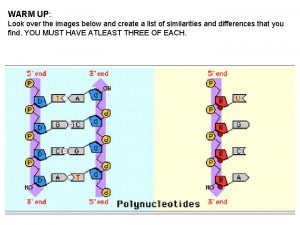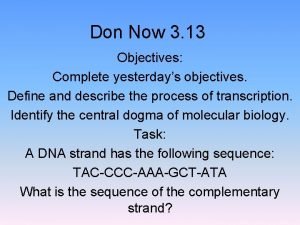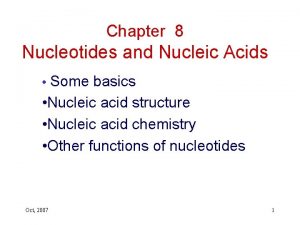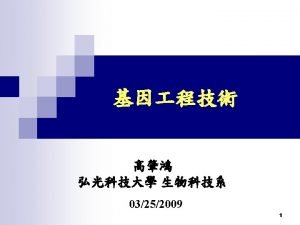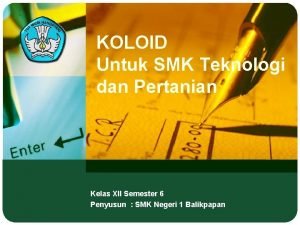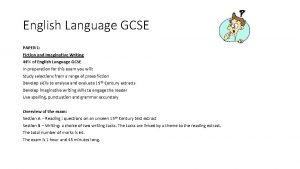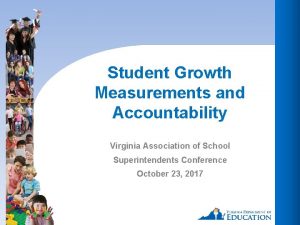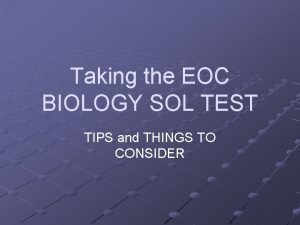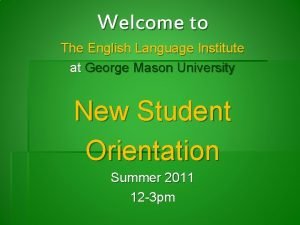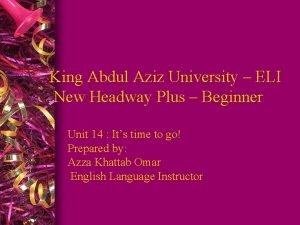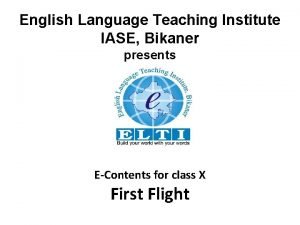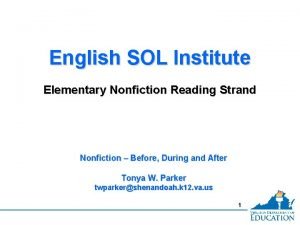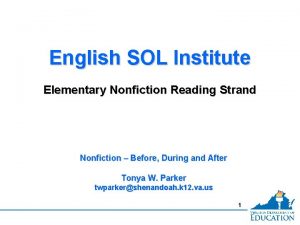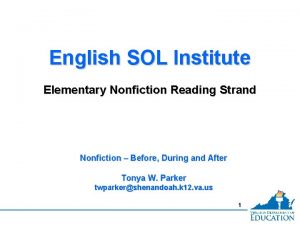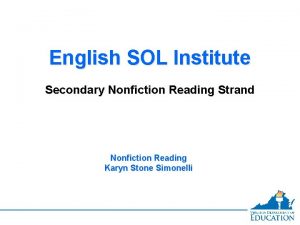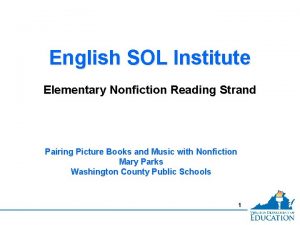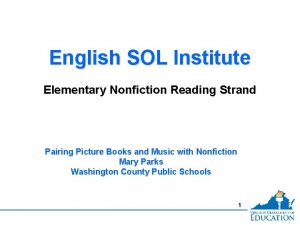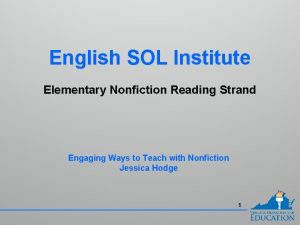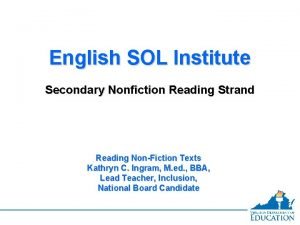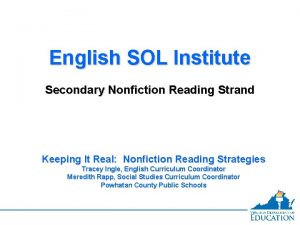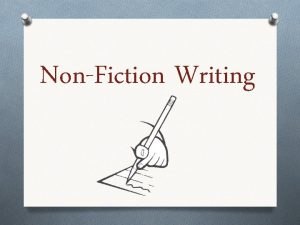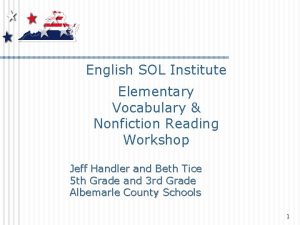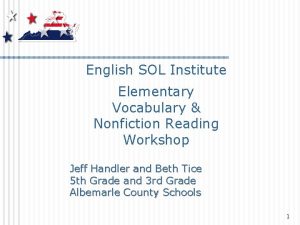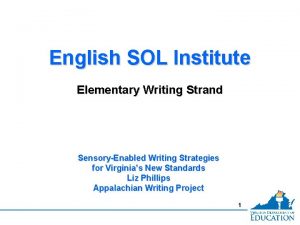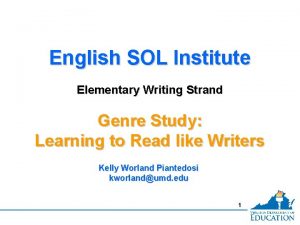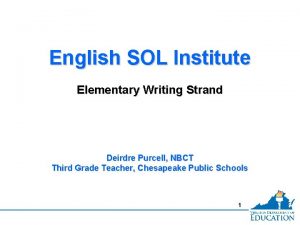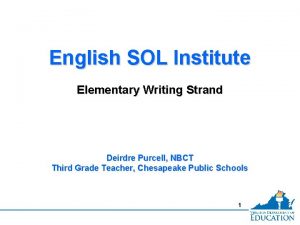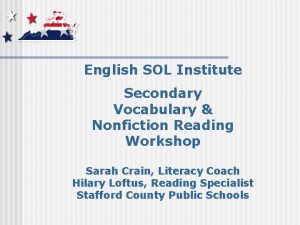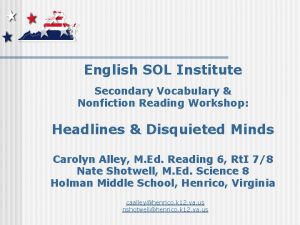English SOL Institute Elementary Nonfiction Reading Strand Stephanie
























- Slides: 24

English SOL Institute Elementary Nonfiction Reading Strand Stephanie Joyner and Carrie Sutton Hanover County Public Schools 1

Elementary Nonfiction Reading Key Points in Reading • Nonfiction comprises at least half of what students read • Content area lessons should reflect integrated English SOL within planning and instruction OR English lessons should integrate other content area information 2

Elementary Nonfiction Reading Key Points in Reading • Comprehension skills and strategies are woven throughout • As students become independent readers, they need to be instructed in reading texts that are considerably longer and more complex in plot, syntax, and structure. 3

What is nonfiction reading? We generally think of nonfiction reading as: • Trade books • Magazines • Text books • Newspapers • Informational read-alouds However, nonfiction reading is also: • Flyers • Recipes This is called functional text. • Menus • Directions 4

Trade books and textbooks What are the challenges? 1. Background knowledge 2. Information is everywhere! How do we address these challenges? 5

Previewing Nonfiction Why do we need to? How do we do it? • Nonfiction reading is harder • Our schema is different. We have varying amounts of background knowledge to bring to the table. • • • Mind maps Schema posters “I wonder” questions 6

Previewing Nonfiction Mind map Schema poster “I wonder” questions 7

Reading Nonfiction Students tend to focus on the main text and view everything else as extra or optional Goal: Get students to realize that everything on the page is equally important in gaining a richer understanding of the topic. 8

Reading Nonfiction “A picture is worth a thousand words. ” Nonfiction text features • • • Maps (2) Charts (1) Tables (2) Diagrams (2) Captions (1) Bullets Photographs (1) Glossary (1) Titles (K) • • • Index (2) Fact Boxes / Sidebars Table of Contents (1) Print types (2) Timeline (4) Graphs (2) Comparisons Headings (K) Illustrations (1) 9 *Features listed in red are specifically mentioned in the Virginia SOL. The number denotes the grade level in which the feature is first mentioned.

Reading Nonfiction How do we draw students’ attention to all features of the text? • Nonfiction feature booklets • Scavenger hunts • Flip the reading 10

Reading Nonfiction How do you flip the reading? Traditionally we read the text first and then look at the other elements. Try thinking outside the box and have students read the extra elements first. Challenge them to get as much information as they can from the extras, not the text. 11

Flip the Reading 12

Functional Text What is it? Functional text is real-world text we encounter every day. Why do we draw attention to it? We have to comprehend it in order to function in daily life. Functional text is everywhere! 13

Examples of Functional Text • • • Flyers (3) Menus Lists (K) Directions (2) Science experiments (2) • Recipes (1) • Cereal boxes • • Party Invitation Brochure Field trip form Math problems (2) Sale circulars Advertisements (3) Coupon books 14 *Examples listed in red are specifically mentioned in the Virginia SOL. The number denotes the grade level in which the text is first mentioned.

Reading Functional Text Although we encounter it every day it can be challenging to fully comprehend all the information. Why? • It can be busy • It is not always in a linear format • It contains a lot of information. 15

Reading Functional Text Questions to guide discussion: • Who would read it? • Why would someone read it? • How would someone read it? • What information could someone get from it? 16

Reading Functional Text Other reading skills to address: • Questioning – Students generate questions that could be answered • Sequencing – Cut and paste recipes or other directions • Author’s Purpose – Classify examples of functional text by purpose or audience 17

Reference Sources listed specifically in the SOLs: • Picture dictionary (1) • Dictionary (2) • Glossary (2) Due to changing times this tends to be our go to resource for everything, but it is necessary for students to learn print resources as well. • Index (2) • Online reference materials (2) • Encyclopedia (3) • Atlas (3) 18

Using Reference Sources Times have changed. Most students are no longer familiar with the structure and purpose of print resources. So how do we teach them? We make them real and meaningful. Don’t simply look at the resources. Instead, create them. 19

Creating a Dictionary 1. 2. 3. Brainstorm words related to a topic. Assign entry words to students or student pairs. Students create an entry that includes part of speech, definition, and sentence. (Upper grades can also include pronunciation with syllables, and multiple meanings. ) 4. 5. 6. Arrange all entries in alphabetical order. Leaving the words in alphabetical order, group entries by the number you want on each page. Glue the entries on the pages and use the entries to determine guide words.

Creating Other Reference Sources • Picture dictionary – replace definitions with pictures • Thesaurus – replace definitions with synonyms • Encyclopedia – compile student research projects • Atlas – compile student drawn maps (bedrooms, settings, etc. )

Using Reference Sources Another challenge is learning how to differentiate between each source and its purpose. Activities to address this skill: • Which source is best? • Reference source scavenger hunt 22

Helpful Information Please feel free to contact us if you have any questions. csutton@hcps. us sljoyner@hcps. us Print resources we have created will be uploaded to the VDOE website. Other helpful resources: • Real-World Reading Comprehension Grades 1 -2 (ISBN 0 -88724 -945 -0) • Real-World Reading Comprehension Grades 3 -4 (ISBN 0 -88724 -946 -9)

Disclaimer Reference within this presentation to any specific commercial or non-commercial product, process, or service by trade name, trademark, manufacturer or otherwise does not constitute or imply an endorsement, recommendation, or favoring by the Virginia Department of Education. 24
 Leading strand and lagging strand
Leading strand and lagging strand Mrna strand that is complementary to the dna strand aattgc
Mrna strand that is complementary to the dna strand aattgc Template strand, new strand, base pair, and dna polymerase.
Template strand, new strand, base pair, and dna polymerase. Watson strand crick strand
Watson strand crick strand Watson strand crick strand
Watson strand crick strand Contoh sol koloid
Contoh sol koloid Pre reading while reading and post reading activities
Pre reading while reading and post reading activities What did the author think i already knew?
What did the author think i already knew? Nonfiction reading test black friday
Nonfiction reading test black friday Fiction extracts for gcse english language
Fiction extracts for gcse english language Sol vertical scaled score
Sol vertical scaled score Biology sol
Biology sol George mason university english language institute
George mason university english language institute King abdulaziz university english language institute
King abdulaziz university english language institute English language teaching institute
English language teaching institute Round robin reading vs popcorn reading
Round robin reading vs popcorn reading What are the aims of teaching reading?
What are the aims of teaching reading? Types of readings
Types of readings Guided reading vs shared reading
Guided reading vs shared reading Involves scrutinizing any information that you read or hear
Involves scrutinizing any information that you read or hear Intensive reading and extensive reading
Intensive reading and extensive reading Intensive reading and extensive reading
Intensive reading and extensive reading Developing effective reading skills
Developing effective reading skills Stephanie d wilson
Stephanie d wilson Wpi syringe pump
Wpi syringe pump

